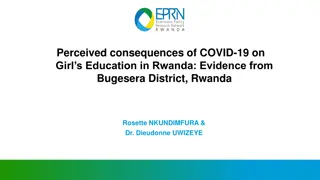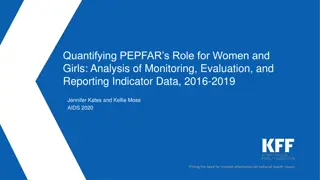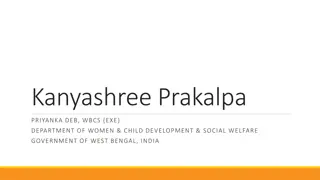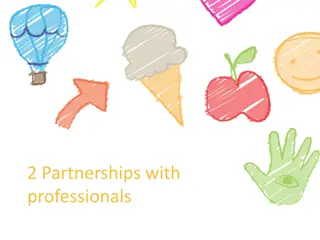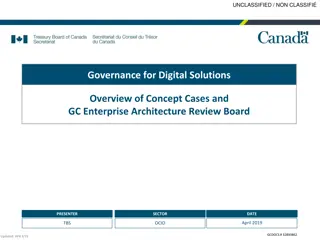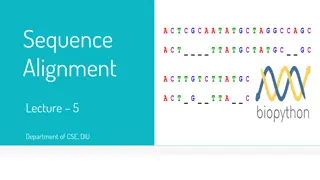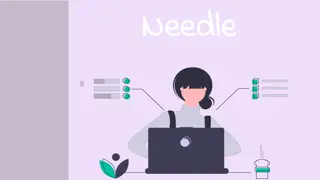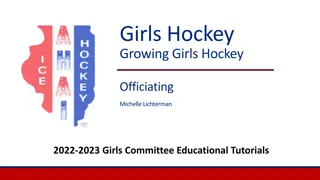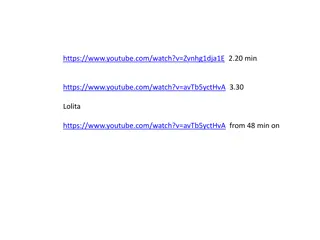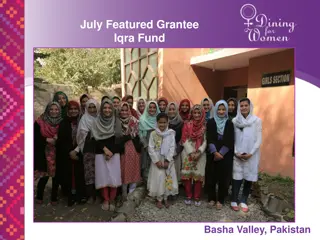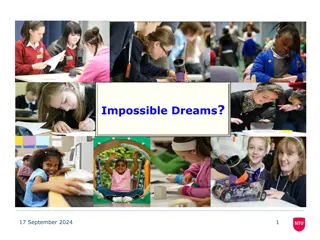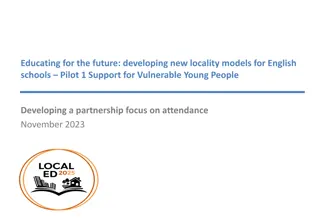Enhancing Girls' Education through Strategic Partnerships and Policy Alignment
The Educate.HER Coalition, led by women-led organizations, focuses on women's rights and transformative leadership. They build partnerships for research, policy review, awareness, capacity building, advocacy, and more to implement the National Policy on Girls Education. Aligning with the National Girls Education Strategy, they aim to address barriers and promote gender equity in education through institutional frameworks and strategic objectives.
Download Presentation

Please find below an Image/Link to download the presentation.
The content on the website is provided AS IS for your information and personal use only. It may not be sold, licensed, or shared on other websites without obtaining consent from the author. Download presentation by click this link. If you encounter any issues during the download, it is possible that the publisher has removed the file from their server.
E N D
Presentation Transcript
The Educate HER Coalition The Educate HER Coalition Helping Our People Excel, Inc The coalition is led by three women-led organizations with a strong focus on women s rights, and women s transformative leadership. The Educate HER Coalition builds strategic partnerships with government line-ministries, civil society organizations, donors women's rights groups, autonomous social movements, and media institutions for: Research and policy review Awareness and civic participation Capacity building (technical and logistical resources) of education stakeholders Advocacy and policy engagement CAREFOUND - Liberia Educate HER is a stand-alone, girls- and women-focused project focused on ensuring the effective implementation of the National Policy on Girls Education. Paramount Young Women s Initiative
Aligning the Education Sector Plan with the Aligning the Education Sector Plan with the National Policy on Girls Education and the National Policy on Girls Education and the National Girls Education Strategy National Girls Education Strategy
Overall Alignment Overall Alignment Framing Education Sector Plan National Girls Education Policy (National Girl Education Strategy 2021-2026) The NGES provides the framework for the implementation of the NPEG, providing prescriptive solutions to achieving all the NPEG measures to address the barriers to girls' education. The ESP provides a sector-wide strategy for implementing the National Education Act of 2011, corresponding policies, frameworks, and programs, streamlined using a system-based approach. The ESP referenced the NGES as the operational document to implement the NPEG and the ESP. As also embedded under the Education Reform Act 2011 (2 promoting equal access to education opportunities for all, without discrimination; (4) decentralizing the education system; (5) promoting and protecting human rights with respect to access and opportunities for quality education; (7) promoting gender equity and equality throughout the educational system) Rationale Alignment
Institutional Frameworks Institutional Frameworks Framing Education Sector Plan National Girls Education Policy (National Girl Education Strategy 2021-2026) The ESP is aligned with addressing the supply and demand side barriers to GARC through the three goals (increase equitable access, improve quality and relevance of teaching and learning, and strengthen efficiency and management capacity). STRATEGY: To improve Girls' Retention, ensure Girls' Rights and Protection, and improve Girls' Education The NGES articulated and framed the 107 policy measures of the NPEG through 3 strategic objectives. SO1: Addressing social-cultural and demand-side barriers to education SO2: Addressing supply-side barriers to girls education. SO3: Strengthening the gender-responsiveness of the education management and accountability system Additionally, the ESP strategies to address social- cultural demand-side barriers to GARC are considered as cross-cutting interventions. Therefore, they are broad and may not attract the needed attention and support.
Institutional Frameworks (Analysis Contd) National Girls Education Policy (National Girl Education Strategy 2021-2026) Framing Education Sector Plan The NGES results framework (and the NPEG 16 indicators) are not highlighted in the ESP as mandated by the NGES. There is no mention of the Girls Education Report Card in the ESP monitoring framework and how this dataset will inform changes and intervention designs within the ESP. Monitoring, Evaluation, & Measurement Indicators to measure the NGES are not captured clearly in the ESP. Hence, the plan only provides surface-level data through the M&E Reporting documents (like the Annual School Census Report)
Institutional Frameworks (Analysis Contd) Framing Education Sector Plan National Girls Education Policy (National Girl Education Strategy 2021-2026) Recurrent and Capital Investments to Girls-specific indicators within the ESP need to be increased and fall short of the NGEP mandate. For Instance: The ESP doesn't capture clearly whether the total investment in Girls Education over multi-years reaches the 5%MoE annual budget minimum threshold as mandated by the NPEG. A. Grants, subsidies, and scholarships Investment (Girls Education Financing) Yr1 (22/23) --2,093/1.8%; Yr2 (23/24) --3,042/2.2%; Yr3 4,067/2.5% B. School Health and wellbeing yr1-1,763/1.5%; yr2-3654/2.7%; yr3-5,933/3.6% Under SO1 of the NGES, the regulatory bodies (National Education Advisory Council and County and District Education Board, are critical to ensuring oversight and compliance). Capital Investment in Girls-specific indicators - WASH yr1-5,113/16.3%; Yr2- 5,366/11.5%; yr3-5653/11.7%
Recommendations 1. The Legislature, Ministry of Finance and Development Planning and others overseeing decision-making process around the national budget should increase budgetary support to education to ensure that government s minimum 20% financing commitments for education is realized and even surpassed. 2. The Ministry of Education should develop a gender sensitive and responsive budget that ensures that at least 5% of its annual budget addresses girls and women specific issues, as provided in Chapter 8 of the National Policy on Girls Education. Also, the Ministry should work with other stakeholders: development partners, media, civil society, traditional leaders, etc. to undertake meaningful activities that will avail increased financial, logistical, psychological, and other support to girls to increase their secondary school enrollment, retention, and completion across the country; 3. We must continue to engage traditional leaders, parents, and communities in pormiting girls education at the local level. All parties should work together to create the necessary sensitization and awareness and an enabling environment for girls to be motivated to enroll, stay, and complete schools, especially at the secondary level. There is need for strategies that provides for closer individual interaction, direct involvement of women and girls, community action plans, and policy engagement; 4. Stakeholders must strengthen national campaigns to combat stigma and discrimination against early and unintended pregnancies, create clear laws/ policies providing support or interventions for pregnant girls and young mothers, and clearly define the policy on access to education and nondiscrimination when it comes to girls that are pregnant;
Recommendations 5. Government and its partners must provide safe and positive learning environment and space for girls, create and support structures at the community and school level for, of, and by girls for peer support. This will help to eliminate or minimize School Related Gender-Based Violence (SRGBV) verbal assaults, unwanted touches, sexual coercion, etc. and peer pressure, and support sex education for girls; must be intentional in recruitment and training female teachers, especially at the secondary level. 6. Civil society organizations must use all available feasible means to engage with state actors to advocate for more funds to education as well as political will to implement the New Education Reform Act of 2011 and the National Policy on Girls Education, among others; and 7. Government and its partners must ensure access to appropriate education and skill-training for children with disabilities, especially girl children, and increasing awareness of the needs of people with disabilities, especially women with disabilities 8. The MoE must integrate the NGES result framework and streamline the NPEG indicators into annual, bi-annual, and quarterly data collection exercises. These indicators and data must inform the development of the Girls Education Report Card and inform decision-making and appropriate investment in Girls Education.
THE EDUCATE HER WEBSITE: www.educateherlib.com quantitative data on girls education analysis and tracking of trends in the areas of adequate systems for evidence- based decision making, coordination and capacity building, and financial investments. national and regional policies, research and commentaries on Girls Education
www.educateherlib.com A key focus of Educate HER s key focus is improving the availability of and access to information and disaggregated data on girls education Key features: GARC Map Girl Education Dashboard Coming Soon!
Partnership with the Ministry of Education 1. Support county-level trainings of school administrators and education officers to expand their understanding of the NPGE and other policy instruments that support girls education, and develop county-level strategies/initiatives. 2. Support national data collection, analysis and reporting exercises. Provide logistics support to MOE and field staff for data collection and reporting (desktop computers, communication and transportation allowance) Support joint bi- annual MEAL (monitoring, evaluation, accountability and learning) assessment in 15 counties Conduct trainings for EMIS personnel to conduct data collection and reporting. 3. Support the publication of a Girls Education Dashboard that will focus on GARC-specific indicators
Policy Briefs and Mapping Documents EDUCATE HER: Increasing Financial Investment for Gender Equality and Equity in Education Budget Policy Brief: consist of policy analysis, power mapping and resource mapping. Reviews the budgetary mandates as per national and regional instruments signed by the Government of Liberia. and the current national budget and education sector budget to make recommendations. National Budget Cycles & Decision-Making Processes for The National Policy on Girls Education: consist of mapping of national budget decision-making forums, analysis of budget processes/cycles to help CSOs identify strategic points of entry for effective budget advocacy. Promoting Gender Equality and Equity in Education Taking Collective Action to Ensure Girls Attendance, Retention and Completion (GARC) In Schools in Liberia Policy Brief: consist of a review of the GARC social research conducted by HOPE, power mapping and a policy review to identify programming commitments as per national and regional instruments signed by the Government of Liberia to make recommendations. Mapping of National Education Policy and Decision-Making Forums & Platforms: consist of an analysis of the national policy decision-making processes and cycles and mapping of national decision-making forums. County Action Plans: The County Action plan outlines key priority action steps identified by women, girls community leaders, school administrators at the secondary- level and education officers to support the girls education at the county and community level.
Educate HER Liberia Educate HER Liberia c/o Helping Our People Excel (HOPE), Inc. Tubman Boulevard/Sophie s Junction, Congo Town, Monrovia, Liberia Email: info@educateherlob.com Website: www.educateherlib.com Facebook: Educate HER Liberia Education Out Loud| OC2: CSOs working at national level







